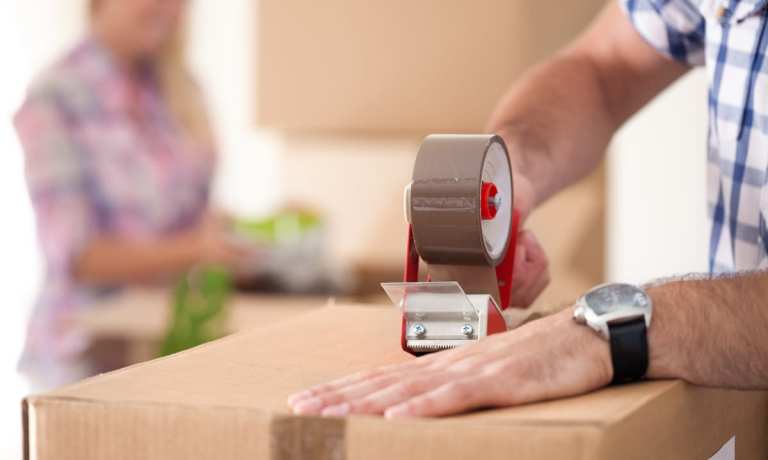
The number of unbanked consumers was on a downward curve before the pandemic hit and caused widespread financial distress.
Now that number is expected to grow as the economic downturn makes it even more difficult for the unbanked to save the funds they need to meet checking account minimums and enter the banking world.
Getting disbursements to unbanked consumers — especially those working in the gig economy — is therefore a top priority for government agencies and companies. Managing wage disbursements to unbanked gig workers must be done with careful consideration of how the costs or frustrations inherent in some methods could affect these individuals, said Alani Kuye, CEO of on-demand moving platform Phlatbed.
Phlatbed offers flexible help to move items to homes or apartments — or even to pick up large-scale items like furniture from retail stores — and currently has approximately 30,000 active drivers across the U.S. on its platform. Kuye explained in an interview with PYMNTS why the pandemic is making it difficult for the company’s unbanked drivers to collect disbursements and described how using devices such as smartphones and digital payment solutions may help in this area.
Breaking the Unbanked Banking Loop
Sending disbursements to the unbanked has gotten easier in recent years with the advance of digital tools and alternative services designed to draw them into the digital financial ecosystem, Kuye said. Unbanked drivers could use these services as a jumping-off point to save funds, but the ongoing pandemic has dissipated their ability to do so.
“Now, under normal circumstances, pre-COVID-19, what was happening was those who started there ended up transitioning out of what I will call the lower banking tier into a regular account,” he said. “But with the pandemic, what happened was a lot more [individuals] stayed within that phase, but they were doing more jobs.”
Doing more jobs means earning more money in theory, Kuye continued, but these funds have nowhere to go for drivers lacking bank accounts, as most alternative solutions have limits on how much money can be placed on them at any given time. A limit of $1,000 would mean that unbanked drivers racking up $2,000 in earnings would therefore have to spend $1,000 to make room for those additional funds or else leave them waiting in escrow, effectively slashing any benefit of picking up extra work. Options are available to try to mitigate these frustrations, but the other pressing problem is cost, Kuye explained.
“We can get checks out, but we are going to have to charge them to do that,” he said. “Then you send the check out; it will not get there for a day or two [and if] you have to overnight it, that is $20 [lost] there. I mean, you have eaten half of the drivers’ revenue just to get them a physical check.”
Disbursing pay to unbanked or lower-income drivers at speed — and without high fees — is where mobile tools could come into play. Expanding smartphone use for disbursements could mitigate many of the problems unbanked drivers currently experience but might also mean thinking about disbursements — and banking itself — quite differently.
Mobile and the Instant Payment Question
Most members of the gig economy are reliant on their mobile devices to pick up work, and Phlatbed is no exception. The on-demand moving platform allows drivers and consumers to book and coordinate jobs via its mobile app, where drivers can also keep track of their earnings and other metrics. Funneling payments through the company’s app is a natural next step — and several gig platforms such as Uber and Lyft have already done so, offering instant payments that rely on mobile-optimized wallets held in-app. Such capabilities have clear benefits for drivers, but it is also important to consider who is actually bearing their cost, Kuye cautioned.
“We are looking at those in-app instant payments as well, but we have to make sure [they are done with] the right partner — not only the technology, but also the volume and bargaining power,” he said. “We can do that today; it is just [that] for every million dollars, you are paying about $200,000 for instant transactions. The value proposition … is just money you are leaving on the table for convenience that most of your labor pool may not necessarily see the value in because it’s coming out of their pocket. It’s not going to come out of ours. It’s going to come out of theirs.”
Getting this cost and convenience ratio balanced is critical, but it bears noting that many individuals in the gig economy are already expecting payments via mobile and not via traditional banking channels. Shifting to meet that expectation for instant disbursements — especially in a way that could coax the unbanked into the larger financial world — could therefore take gig economy platforms into some unexpected places. Uber, for example, has floated the idea of becoming an actual bank — something Phlatbed is also considering.
“It is definitely not off the table,” Kuye admitted. “Right now, I’ve got 33,000-plus people that we are doing this for, so right out of the gate, you have 33,000-plus customers. That’s not bad, [so] it is definitely not off the table. I think we will see more gig platforms go that route because the key metric — [the] key data point — is ‘Who owns the customer?’ In this case, we own the customer, and we own the drivers.”
Phlatbed’s disbursement offerings and banking possibilities will largely depend on how expectations for money movement continue to evolve in the course of the ongoing pandemic — not just for the unbanked, but for the wider workforce as well.